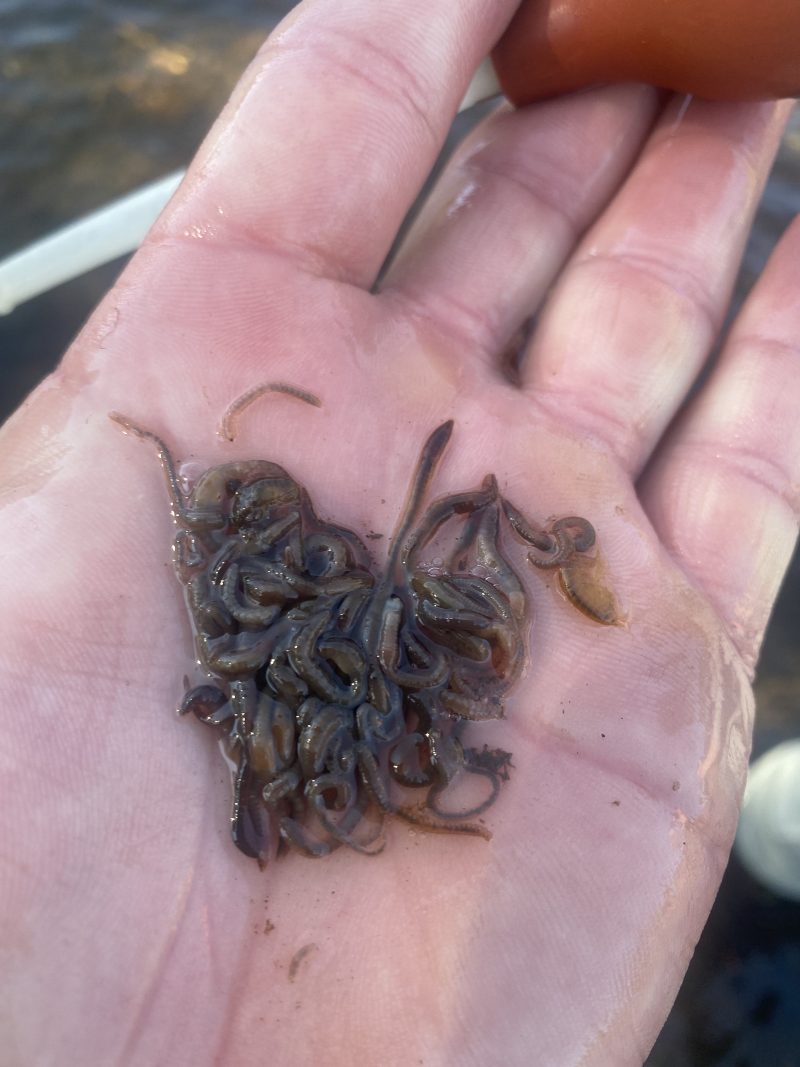April Comes in like a Worm
Hey, Siri, how do you spell “Annelid”?
Siri: W-O-R-M
Our “bug” of the month for April is the worm. As we head into spring with higher flows on our local tailwaters, it’s great to have a variety of worm patterns in your fly box. The combination of hungry fish coming out of their winter doldrums and the high caloric value of the worm, make the worm a go-to pattern as we move into and through April.

The Low-Down on the Worm
First, some clarifying info. Annelids, which are a large phylum in the world of invertebrates, include earthworms, ragworms, and even leeches. The 22,000 species of annelids can be classified even further into a variety of sub-groups. If we narrow even more and get scientifically technical (which we won’t here – I’m an English teacher, people!), the aquatic worm lives its life in the substrate – that organic material at the bottom of the river. And that is an important factoid for fishing the worm.
In essence, when we talk about aquatic worms, we are talking about the worms that live their entire life in the water. Because of that, when we do fish some worm patterns, we are actually “matching the hatch.”
Of course, there are other worms – earthworms – that find their way into the rivers and streams. They may be burrowed into the soil of the bank and then washed into the river with runoff or a change in flow. Or smaller worms may be attached to grasshoppers and actually be carried into the river by the larger terrestrials.

How to Fish the Worm
Even though some purists may claim that fishing with one of the several worm patterns is awfully close to bait fishing, it’s not. Color, size, and an effective dead drift all come into play when fishing worm patterns.
If you told me that I could only fish one pattern for the rest of my life, and my life depended on catching fish, I would tie on a worm.
Steve Gossage, long-time guide
Fish the worm close to the bottom. True aquatic worms will get dislodged from the rocky river beds. Anglers want to fish the worm with enough weight that it bumps along the bottom and up into the lower 4-6” of the river. Experiment with depth, for sure.
Don’t be afraid to place that cast close to the bank, too. A good drift along an undercut bank will draw out that big brown looking for a high-protein meal. Why snack on a 1,000 nymphs when you can chow down on a big meal?
As the flows increase, either due to run-off or simply because more water is released from our local reservoirs, the worm is a great choice for the first fly in a tandem rig. Plenty of anglers use a combo of “worm and an RS2.” It’s a great “search pattern” to find where fish may be holding.
Experiment with color and size, too. Anglers will find that the red or wine-colored worm that worked on the Arkansas tailwater doesn’t fool the fish at Deckers. Changing tailwaters? Change to that tan or brown worm.
For true annelids, the red annelid in sizes ranging from 18-22 can be effective as a point fly.

How to Tie It
When I began to inch my way into tying, the San Juan worm was an early pattern. Seriously. It gave me practice with just same basics – placing the hook in the vise, getting even thread wraps, tying on another material, and learning to whip finish. Don’t judge! I’m a slow learner.
videos
Hopper Juan Ramirez’s Red Annelid
The San Juan Worm from InTheRiffle.
Charlie Craven’s San Juan Worm
Final Words
Don’t shy away from using a worm pattern. In the early spring, your days on the water can change from “OK” to “really good” by tying this on.
Come into the shop and talk with our expert staff about early season fishing. Subscribe to our YouTube channel for “Bug of the Month” videos, tips and tricks, and info on gear and apparel.
And you can keep informed by checking out our fishing reports – update more frequently than any other source in the Pikes Peak region!

Great stuff. Keep up the good work!